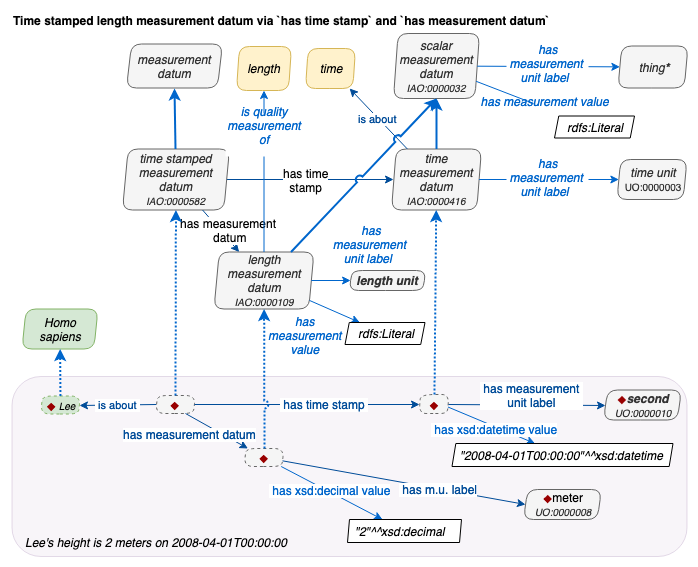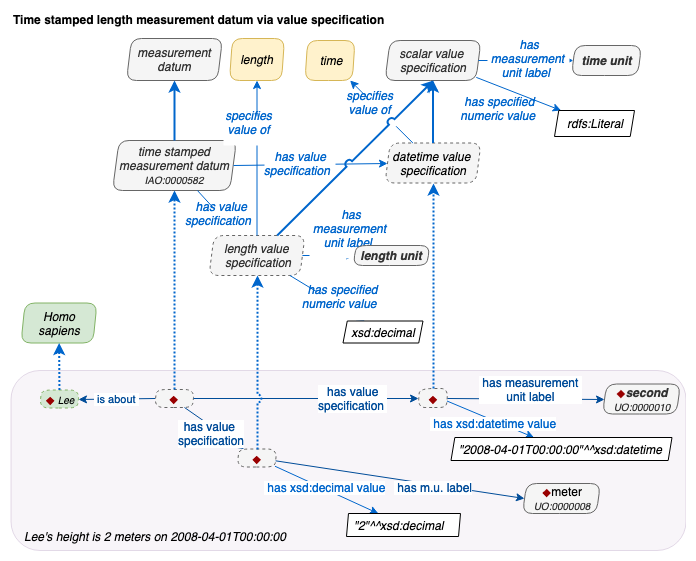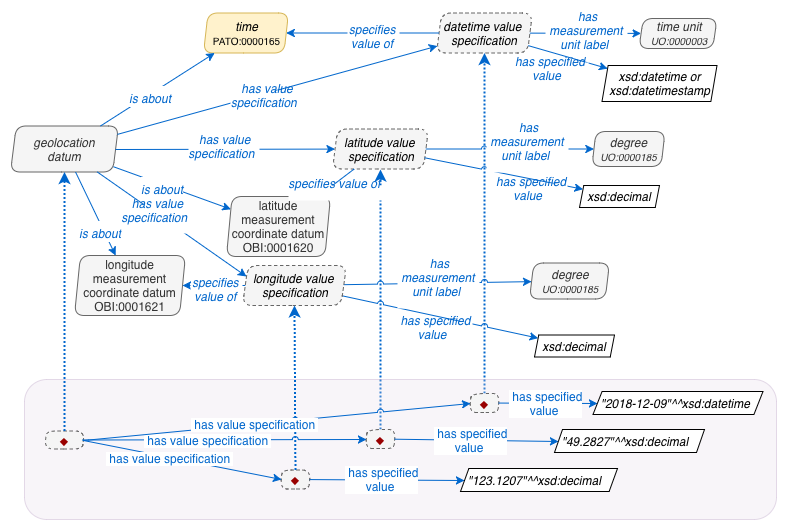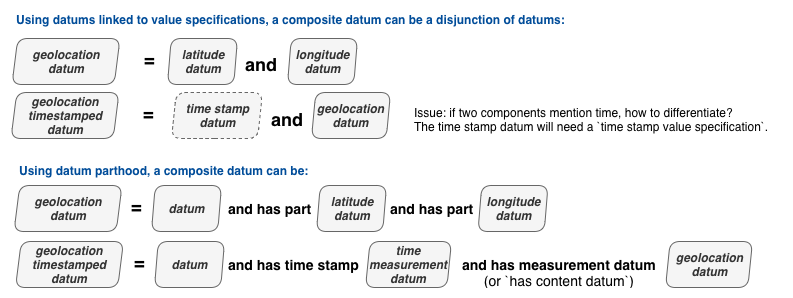Time stamped data
Process models and data items can be enhanced with time information in a few ways.
-
Assays and other processes can be marked with start and/or stop times, and therefore any specified output could have those time points to mark its relevance.
-
OBI provides time-stamped datum description by data properties directly, and via the value specification approach. The diagrams below show how similar these are.
Time stamped data via datum parthood
Originating in IAO, this OBI structure illustrates datums being part of a datum, using has measurement datum and has time stamp, which are both has partsubproperties to disambiguate the time dimension from the other (one or more) measurement datum components.
Using:

`time stamped measurement datum`:
- `has time stamp` exactly 1 `time measurement datum`
- `has measurement datum` some `measurement datum`
`geolocation coordinate datum`:
- `has measurement datum` exactly 1 `latitude datum`
- `has measurement datum` exactly 1 `longitude datum`
`time stamped geolocation coordinate datum`:
- `has time stamp` exactly 1 `time measurement datum`
- `has measurement datum` exactly 1 `geolocation coordinate datum`
Damion’s note: I would advocate for using a new general has content datum rather than the has measurement datum OP for these expressions so that we don’t have to set up a whole bunch of new entities to do the same thing for the other datum roles: predictions, settings, etc. E.g. suggests more of a fundamental time stamped datum rather than a role-specific time stamped measurement datum, which could be described using post-composition.
Time stamped data via value specifications
- Any datum’s existing value specification(s) can be accompanied by a time value specification, effectively making it a 2-dimensional or n-dimensional observation. In other words, value specifications, as long as they are unambiguously about (
specifies value of) different things, are additive. Because of the underlyingpart ofobject property, thismany ways this resembles the datum-data property approach.
Here is a diagram showing a generic “time stamped measurement datum” that is about some time and quality.

More specifically, here’s a time stamped geolocation datum about a latitude and longitude. It references two seperate value specifications which have degree units but are distinguishable by what they are about. Each of these value specifications could detail (i.e. be the metadata for) a column in a spreadsheet. The instance tripple below would be the conversion into owl/rdf of the row fields.

In summary, n-dimensional datums are achieved by either:
